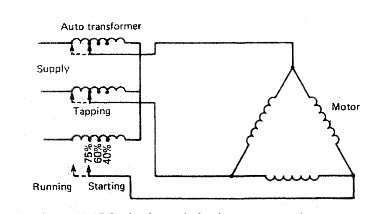
A.C. Motors for Ships Machinery- Arrangement and Distribution
Supplying alternating current to a coil:
which is free to rotate in a
magnetic field will not produce a motor effect since the current is
constantly changing direction. Use is therefore made in an induction or
squirrel cage motor of a rotating magnetic field produced by three
separately phased windings in the stator.
The rotor has a series of copper conductors along its axis which are joined by rings at the ends to form a cage. When the motor is started the rotating magnetic field induces an e.m.f. in the cage and thus a current flow. The current-carrying conductor in a magnetic field produces the motor effect which turns the rotor. The motor speed builds up to a value just less than the speed of rotation of the magnetic field.
The rotor has a series of copper conductors along its axis which are joined by rings at the ends to form a cage. When the motor is started the rotating magnetic field induces an e.m.f. in the cage and thus a current flow. The current-carrying conductor in a magnetic field produces the motor effect which turns the rotor. The motor speed builds up to a value just less than the speed of rotation of the magnetic field.


